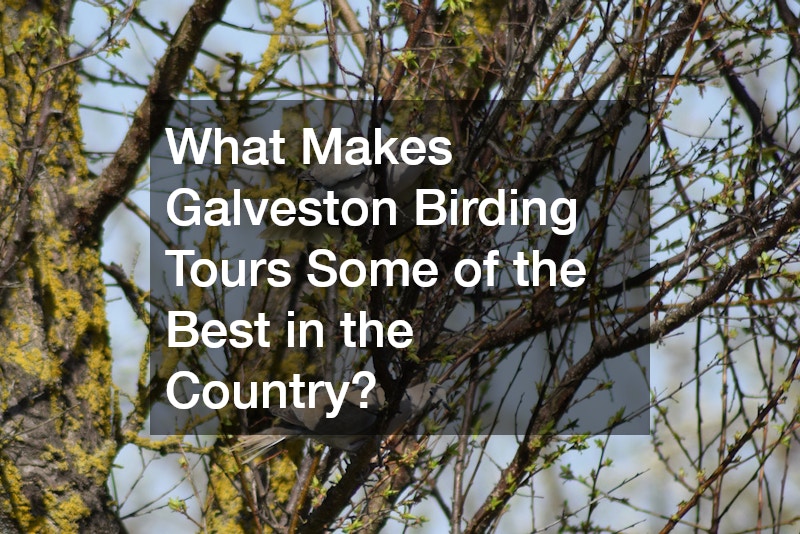Texas is renowned for its exceptional Galveston birding tours, drawing bird enthusiasts from all over the country. This article explores the elements that contribute to Galveston’s reputation as a birdwatcher’s paradise.
What Unique Bird Species Can Be Seen on Galveston Birding Tours?
Galveston is a vibrant hub for bird diversity and attracts bird enthusiasts by offering unique sightings of several rare and migratory species. One of the most striking birds that can be observed is the Roseate Spoonbill, known for its vibrant pink plumage and spoon-shaped bill, which adds a touch of tropical allure to the landscape.
Equally captivating, the American Avocet with its elegant upturned bill, captivates observers with graceful foraging behavior in shallow waters. The Reddish Egret, with its animated hunting technique, further enhances Galveston’s reputation as a unique destination for avid birdwatchers.
The variety of species found in Galveston during migration periods is astounding, providing birders the opportunity to witness species convergence in one location. These natural spectacles not only include waterfowl and waders but also songbirds, raptors, and shorebirds gathering in substantial numbers. With its geographical position along the Central Flyway, Galveston serves as a critical stopover for these birds on their migratory routes, marking it as a quintessential spot for those seeking to see flocks of diverse wings in motion.
Adding to the variety are the island’s resident species, which offer surprise encounters with charming birds like the Painted Bunting, reputed for its gorgeous, multicolored feathers. The presence of these unique and beautiful birds throughout the year keeps every birding tour exciting and unpredictable, ensuring that both seasoned birdwatchers and newcomers can experience the thrills of diverse avian life. Engaging with local birdwatching tours gives enthusiasts access to areas rich with activity and discovery, making each tour memorable for its unexpected twists and sightings.
How Does the Local Habitat Contribute to Galveston’s Birding Appeal?
The local habitat in Galveston significantly enhances its birding appeal by offering a variety of ecosystems that support an impressive array of bird species. Salt marshes, with their lush grasses and tidal flats, provide essential feeding and nesting grounds for shorebirds and waterfowl. These areas not only ensure sustenance for the birds but also create picturesque settings where birdwatchers can enjoy the beauty of nature combined with avian activity. These habitats are frequently teeming with life, rendering each visit unique due to varying tidal patterns and cycles of bird migrations.
Beyond the marshes, Galveston’s beaches present expansive areas for observing birds like sandpipers and plovers, which rely on the shoreline for food and rest. These sandy stretches, dotted with driftwood and dunes, are ideal for birdwatchers, offering unobstructed views of birds in motion against the backdrop of the vast Gulf of Mexico. Observers can enjoy the sight of flocks riding thermals, diving for fish, or engaging in the dynamic dance of courtship displays and territorial skirmishes, all within the soundscape of crashing waves and wind.
Woodlands within the island provide a contrasting environment rich with opportunities to see different bird species, especially during migration. These wooded areas are crucial for passerines and other small birds seeking refuge and nutrients during their demanding journeys. The rich diversity of plants in these woodlands supports a web of life that includes insects, further attracting birds. The combination of these varied habitats not only supports an extraordinary variety of birds but also enriches the overall birdwatching experience by offering a dynamic range of environments to explore.
What Makes Galveston Birding Tours Well-Organized and Enjoyable?
Galveston birding tours are celebrated for their meticulous organization, which plays a key role in creating an enjoyable experience for participants. Expertise is a cornerstone of these tours, with knowledgeable guides who are passionate about birding and deeply familiar with the local avian life and habitats. These guides enhance the tours with detailed insights, pointing out rare species, explaining behavior characteristics, and sharing ecological significance, thereby enriching the educational value of the experience for birders of all levels.
The well-planned itineraries reflect a respect for both nature and the participants’ experiences, with seamless transitions between sites and careful timing to coincide with periods of high bird activity. Tours are often timed to capitalize on optimal light conditions in the early morning or late afternoon, capturing the most vibrant avian activity while providing picturesque lighting for photography. Additionally, these tours frequently offer various routes catering to different interests, whether one’s focus is on specific bird families, such as raptors or shorebirds, or on broader ecosystem exploration.
Accessibility also adds to the enjoyment and reputation of Galveston’s birding tours. Many tours offer transport services to and from birding hotspots, reducing logistical stress and allowing participants to focus on the beauty and serenity of birdwatching. Moreover, the inclusive approach ensures that services cater to small groups, enhancing the personal interaction with guides and other participants, while maintaining a sense of community and shared interest. These factors make Galveston birding tours highly effective at engaging a diverse audience of bird lovers, solidifying its status as a premier birding destination.
Conclusion
In conclusion, Galveston stands out as a premier birding destination due to its unique bird species, diverse habitats, and exceptional tour organization. These factors combine to offer a birdwatching experience that is unmatched anywhere else in the country.

